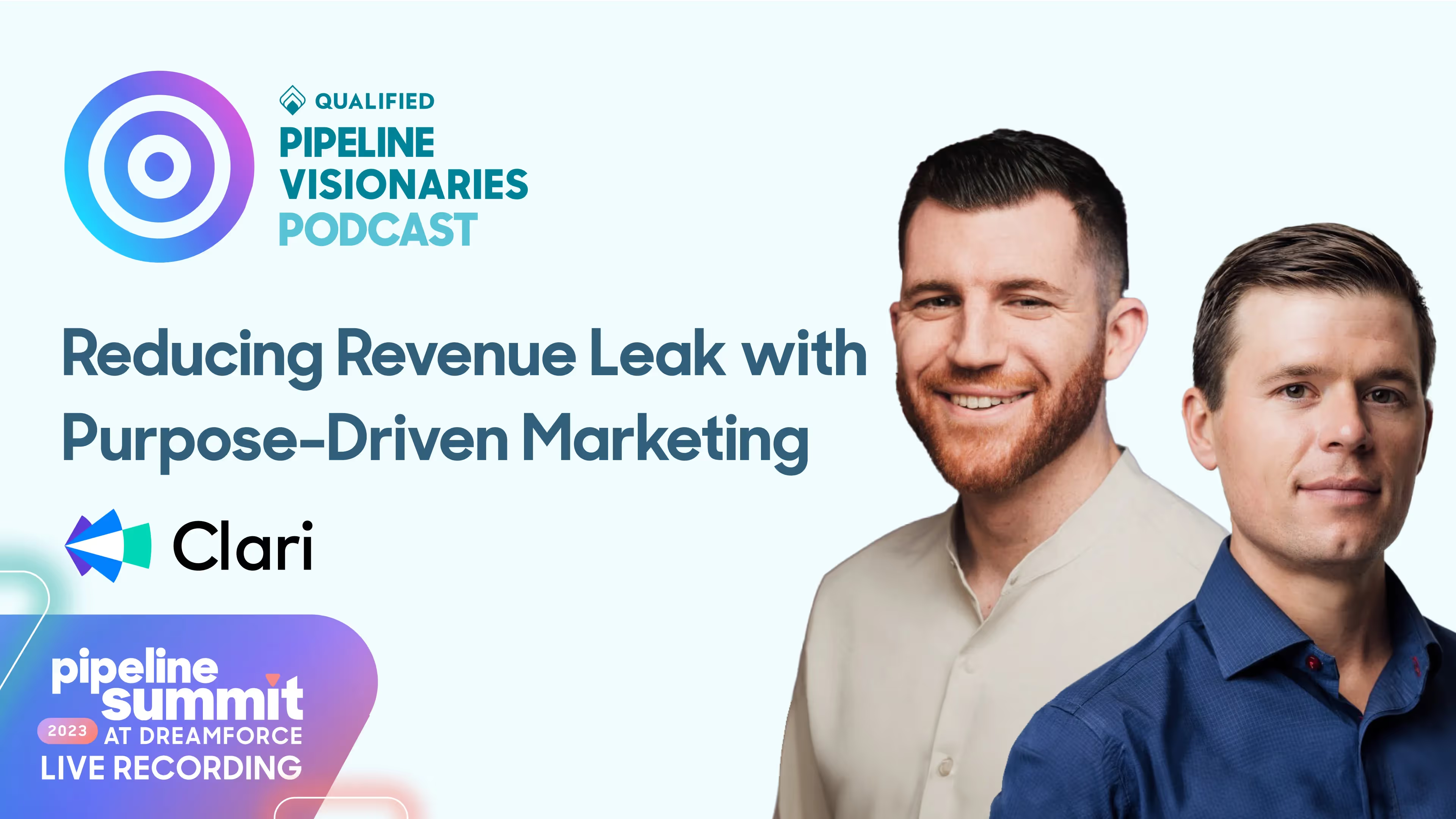Reduce Revenue Leak with Purpose-Driven Marketing
Kyle Coleman, CMO at Clari, and Devin Reed, Head of Content at Clari share how to reduce revenue leak with purposeful marketing strategies.




Kyle Coleman, CMO at Clari, and Devin Reed, Head of Content at Clari share how to reduce revenue leak with purposeful marketing strategies.

This episode features an interview with Kyle Coleman, CMO at Clari & Devin Reed, Head of Content at Clari. Clari’s Revenue Platform improves efficiency, predictability, and growth across the entire revenue process.
In this episode, Kyle and Devin give us the inside scoop on how to reduce revenue leak with purpose-driven Marketing, share their thoughts on operational thought leadership, and how revenue is not just an event it’s an outcome.
Key Takeaways:
Stay up to date with weekly drops of fresh B2B marketing and sales content.
Kyle Coleman, CMO at Clari, and Devin Reed, Head of Content at Clari share how to reduce revenue leak with purposeful marketing strategies.


This episode features an interview with Kyle Coleman, CMO at Clari & Devin Reed, Head of Content at Clari. Clari’s Revenue Platform improves efficiency, predictability, and growth across the entire revenue process.
In this episode, Kyle and Devin give us the inside scoop on how to reduce revenue leak with purpose-driven Marketing, share their thoughts on operational thought leadership, and how revenue is not just an event it’s an outcome.
Key Takeaways:
Stay up to date with weekly drops of fresh B2B marketing and sales content.
Kyle Coleman, CMO at Clari, and Devin Reed, Head of Content at Clari share how to reduce revenue leak with purposeful marketing strategies.


This episode features an interview with Kyle Coleman, CMO at Clari & Devin Reed, Head of Content at Clari. Clari’s Revenue Platform improves efficiency, predictability, and growth across the entire revenue process.
In this episode, Kyle and Devin give us the inside scoop on how to reduce revenue leak with purpose-driven Marketing, share their thoughts on operational thought leadership, and how revenue is not just an event it’s an outcome.
Key Takeaways:
Stay up to date with weekly drops of fresh B2B marketing and sales content.
Kyle Coleman, CMO at Clari, and Devin Reed, Head of Content at Clari share how to reduce revenue leak with purposeful marketing strategies.



This episode features an interview with Kyle Coleman, CMO at Clari & Devin Reed, Head of Content at Clari. Clari’s Revenue Platform improves efficiency, predictability, and growth across the entire revenue process.
In this episode, Kyle and Devin give us the inside scoop on how to reduce revenue leak with purpose-driven Marketing, share their thoughts on operational thought leadership, and how revenue is not just an event it’s an outcome.
Key Takeaways:
Discover how we can help you convert more prospects into pipeline–right from your website.